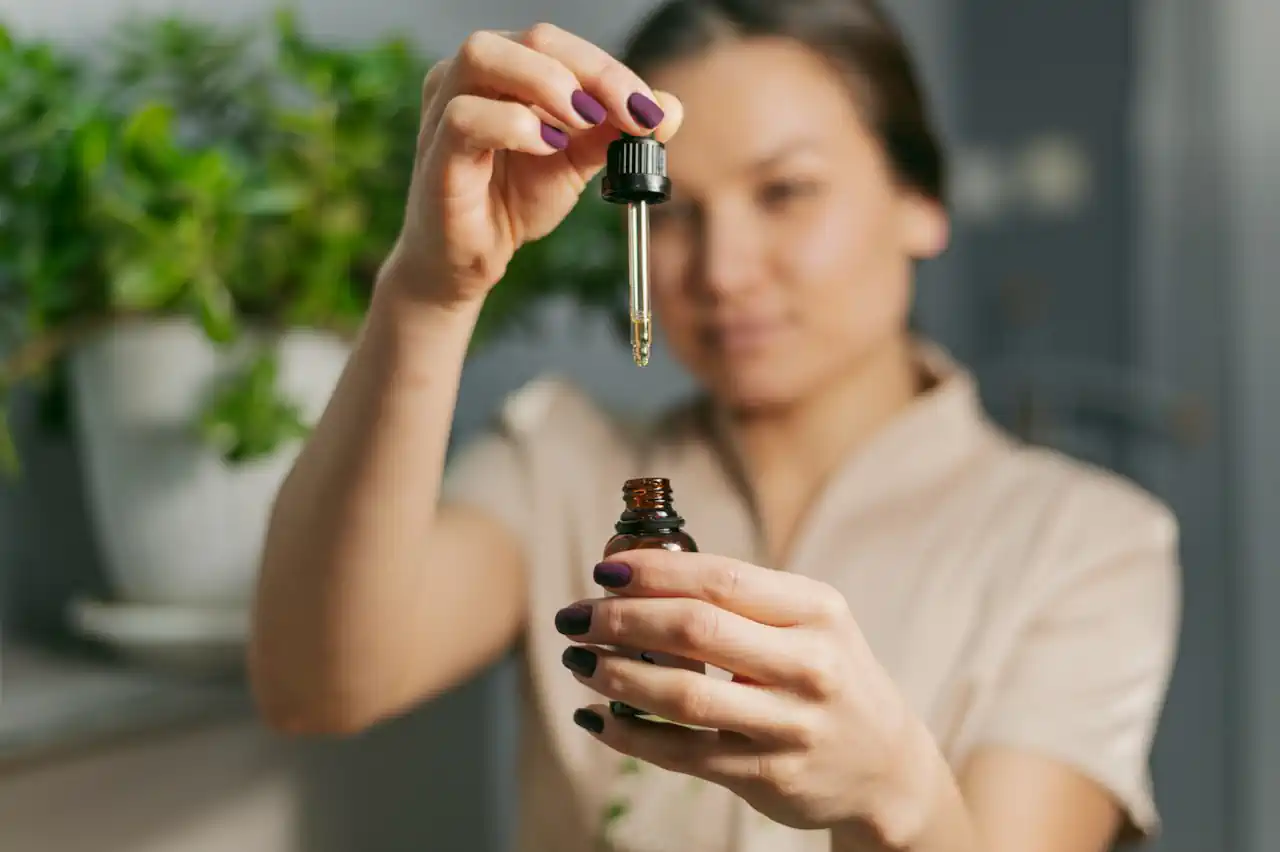In the realm of aromatherapy and natural remedies, essential oils have garnered significant attention for their therapeutic properties. One such essential oil that stands out due to its unique aroma and potential health benefits is galbanum essential oil. Derived from the resin of the Ferula galbaniflua plant, this essential oil offers a wide array of uses ranging from promoting relaxation to supporting skincare routines. In this article, we will delve into the origins, composition, benefits, and applications of galbanum essential oil.
Origins and Extraction Process
Galbanum essential oil is extracted from the resin of the Ferula galbaniflua plant, a member of the Apiaceae family. This perennial herbaceous plant is native to regions of Iran, Turkey, and other parts of the Middle East. The resin is obtained through a steam distillation process, where the plant’s resin is heated to release the aromatic compounds that are then collected and condensed into the essential oil.
Chemical Composition
The therapeutic effects of galbanum essential oil can be attributed to its rich chemical composition, which includes various compounds such as:
- α-Pinene: Known for its anti-inflammatory and bronchodilatory effects.
- β-Pinene: A natural compound with potential analgesic and antimicrobial properties.
- Limonene: Recognized for its uplifting aroma and possible mood-enhancing effects.
- Cadinenes: Believed to contribute to the oil’s anti-inflammatory and antioxidant properties.
- Myrcene: Known for its relaxing properties and potential to enhance the absorption of other compounds.
- β-Caryophyllene: A cannabinoid receptor modulator with anti-inflammatory potential.
Health and Wellness Benefits
1. Relaxation and Stress Relief:
Galbanum essential oil possesses a soothing and grounding aroma that can help alleviate stress and promote relaxation. When inhaled, the aromatic compounds of the oil can stimulate the limbic system in the brain, which is responsible for emotions and memories. This interaction may contribute to reduced feelings of anxiety and stress. Incorporating galbanum oil into aromatherapy practices such as diffusing it in a room or using it in massage blends can create a calming environment, helping individuals unwind after a long day.
2. Respiratory Support:
The anti-inflammatory and expectorant properties of galbanum essential oil make it potentially beneficial for respiratory issues. Inhaling the oil’s vapor can help ease congestion and soothe inflamed airways. The oil’s natural compounds might work synergistically to open up the air passages and encourage easier breathing. Adding a few drops of galbanum oil to a bowl of hot water and inhaling the steam, or using it in a chest rub when diluted with a carrier oil, may offer relief to those dealing with respiratory discomfort.
3. Skin Health:
Galbanum essential oil has been traditionally used for its potential antiseptic and anti-inflammatory properties. These properties could make it a valuable addition to skincare routines. When diluted properly in a carrier oil, galbanum oil might help address minor skin irritations, redness, and inflammation. Its soothing qualities could aid in promoting a clearer complexion and supporting overall skin health.
4. Aches and Pains:
The analgesic and anti-inflammatory effects of certain compounds found in galbanum essential oil could provide relief from muscle aches and pains. When appropriately diluted, the oil can be applied topically to the affected area. Massaging a mixture of galbanum oil and a carrier oil onto sore muscles or joints might help alleviate discomfort and tension.
5. Spiritual and Ritual Use:
Throughout history, galbanum essential oil has been used in spiritual and ritualistic practices due to its unique and distinctive scent. The aroma is thought to have a purifying and uplifting effect on the mind, making it suitable for meditation, prayer, and enhancing a sense of spiritual connection. Incorporating galbanum oil into mindfulness routines or diffusing it during meditation sessions might help create an atmosphere conducive to introspection and inner peace.
6. Emotional Balance:
The aromatic compounds in galbanum essential oil can impact the emotional state by interacting with the brain’s emotional centers. The oil’s earthy and resinous aroma is believed to promote emotional balance, potentially aiding individuals in managing mood swings and emotional fluctuations.
7. Supporting Digestion:
Some of the constituents present in galbanum essential oil, such as α-pinene and β-pinene, have been studied for their potential digestive benefits. These compounds could support the digestive system by promoting healthy digestion, reducing inflammation in the gut, and alleviating digestive discomfort.
8. Antioxidant Effects:
Certain components of galbanum essential oil, including cadinenes and β-caryophyllene, possess antioxidant properties. Antioxidants play a crucial role in neutralizing harmful free radicals in the body, which can contribute to cellular damage and aging. Regular use of galbanum oil might contribute to overall cellular health and well-being.
Incorporating galbanum essential oil into one’s wellness routine should be done mindfully and with proper guidance. Whether you’re seeking relaxation, skin benefits, or emotional balance, the unique properties of galbanum oil can offer a holistic approach to enhancing your well-being. As with any natural remedy, it’s advisable to consult with a healthcare professional before incorporating galbanum essential oil into your health regimen, especially if you have existing medical conditions or are pregnant/nursing.
Usage and Precautions
Usage:
- Aromatherapy: Diffusing galbanum essential oil is a popular way to enjoy its aromatic benefits. Add a few drops to a diffuser or vaporizer filled with water, and allow the scent to fill the room. This can promote relaxation, emotional balance, and a calming atmosphere.
- Topical Application: When using galbanum oil topically, it’s important to dilute it with a suitable carrier oil to prevent skin irritation. Common carrier oils include coconut oil, jojoba oil, almond oil, and grapeseed oil. A safe dilution ratio is usually around 1-2% essential oil to carrier oil, meaning approximately 1-2 drops of galbanum oil per teaspoon of carrier oil.
- Massage: Create a massage blend by mixing a few drops of galbanum essential oil with a carrier oil. Gently massage the mixture onto the desired area to relieve muscular tension, promote relaxation, or address minor aches and pains.
- Inhalation: Inhaling galbanum essential oil can provide respiratory benefits. You can add a few drops to a bowl of hot water, place a towel over your head, and inhale the steam. Alternatively, you can place a drop of oil on a tissue and inhale directly.
- Skincare: Incorporate galbanum oil into your skincare routine by adding a few drops to your favorite unscented moisturizer or serum. Due to its potential antiseptic and anti-inflammatory properties, it may help with minor skin irritations and promote a clearer complexion.
Precautions:
- Patch Test: Before applying galbanum essential oil to a larger area of skin, perform a patch test. Apply a diluted mixture to a small area and wait for 24 hours to check for any adverse reactions, such as redness, itching, or irritation.
- Dilution: Never apply undiluted essential oils, including galbanum oil, directly to the skin. Always dilute them in a carrier oil to prevent skin sensitization and irritation.
- Pregnancy and Medical Conditions: If you are pregnant, nursing, have a medical condition, or are taking medications, consult a healthcare professional before using galbanum essential oil. Some essential oils can have contraindications for certain health conditions or medications.
- Sensitive Skin: Individuals with sensitive skin should be especially cautious when using essential oils. Consider performing a patch test and choosing a low dilution ratio to minimize the risk of skin reactions.
- Children and Pets: Essential oils should be used with caution around children and pets. Their systems may react differently to the potent compounds in essential oils. It’s generally advisable to avoid using essential oils around infants and to consult a veterinarian before using them on pets.
- Photosensitivity: Some essential oils, including galbanum, can increase sensitivity to sunlight. Avoid direct sun exposure to areas of skin where you have applied the oil for at least 12-24 hours after application.
- Quality Matters: Choose high-quality, pure, and reputable brands of galbanum essential oil. Synthetic or adulterated oils may not provide the same therapeutic benefits and can even cause adverse reactions.
- Storage: Store essential oils in a cool, dark place, away from direct sunlight and heat. This helps preserve their potency and extends their shelf life.
Galbanum essential oil offers a range of benefits, but it should be used with care and respect for its potency. Dilution, patch testing, and consultation with healthcare professionals when necessary are crucial steps to ensure safe and effective use. When used thoughtfully, galbanum oil can be a valuable addition to your holistic wellness toolkit.

